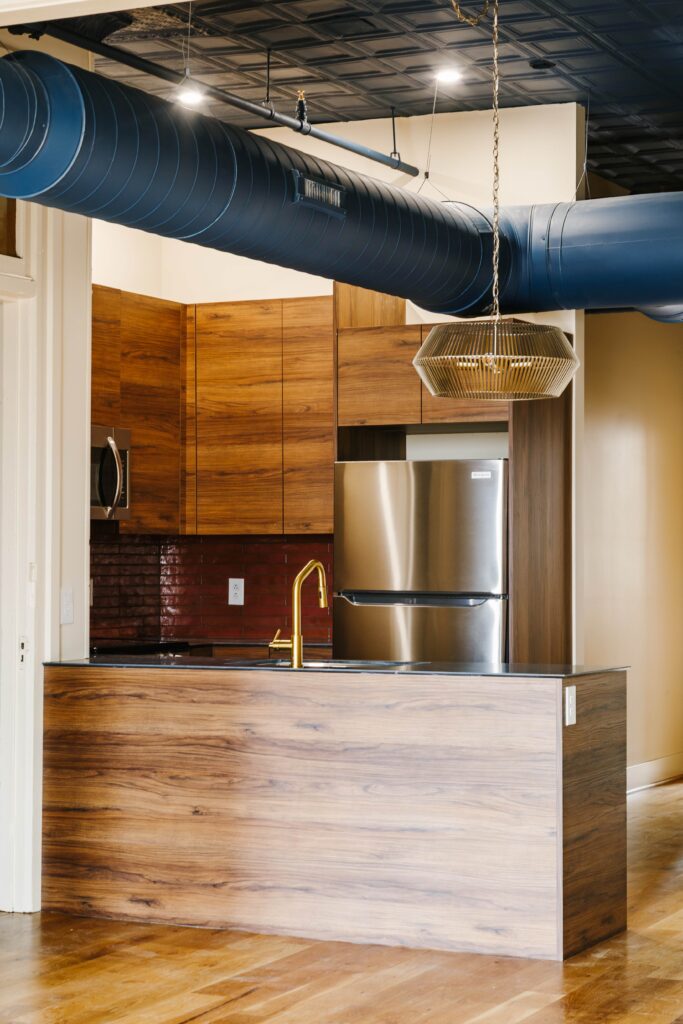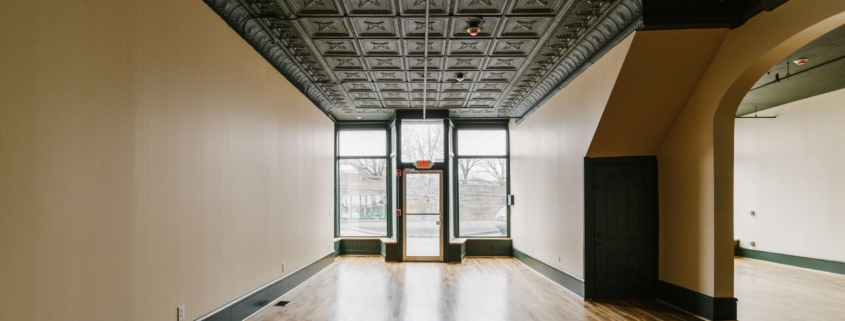Adaptive reuse reshapes Rochester real estate market
Key takeaways:
• Developers repurpose vacant offices and industrial buildings into housing
• Incentives like historic and brownfield tax credits reduce project costs
• 43 North’s Marblery and Canandaigua’s Labelon site showcase new reuse projects
• Innovation Square transforms former Xerox tower into student housing and offices
Adaptive reuse – the process of creatively repurposing buildings for another use or function – is on the rise both nationally and locally. Why is that?


“Number one, I think, is that the quality of construction from prior eras is really valuable,” said Joel Barrett, managing director of Rochester-based boutique real estate firm 43 North Real Estate and its sister company Bace Build. “And number two is what’s happened to the state of office.”
Post-COVID, there has been an influx of vacant office space nationwide due to the changing nature of where and how people work. Simultaneously, there’s a nationwide shortage of residential housing units, with an estimated 4.3 million needed by 2035, per the NAIOP Commercial Real Estate Development Association.
Building new is not always the answer, especially when vacant – albeit older and not originally built for residential – buildings abound.
“Generally, with a new residential construction building, unless you’re doing some type of affordable housing, it’s very difficult to recoup costs,” Barrett said. “So post-COVID you’re seeing a lot less – especially in this marketplace – of new construction residential apartments.”
That’s where adaptive reuse of office or industrial buildings can be beneficial for those in construction and development, as well as the community at large.
“We’ll buy things that no one else would because they’re falling apart,” Barrett said. “We get quite a bit of value on the buy side because essentially we’re buying shells and we’re renovating the inside at a price that would be very similar to what new construction would be.”
Additionally, some costs can often be offset by incentives not available for new construction projects, like historic tax credits and brownfield credits, which are part of the New York State Brownfield Cleanup Program, which provides tax credits for redeveloping contaminated property.
“It takes a village of incentives, loan programs, lots of capital tax credits, pilots, etc., to get these projects done,” said Barrett, who explains that once they are, though, they are unique spaces that can blend the best of both worlds – the character of the time in which they were built with the modernity of today.


An example is 222 South Ave. in Rochester – a former 7,500 square foot, three-story, brick building that was once home to Hebard Marble Works and the V.H. Lang Trophy Company. After purchasing, Barrett and his team were able to get the building, which was constructed in 1858, placed on the National Register of Historic Places.
“It was a small historic project – under 2.5 million – so there’s enhanced state credit at that level,” Barrett said. “We applied for what’s called a SMUCR – Small Mixed-Use and Commercial Renovation – loan from the City of Rochester, and we used an electrification grant for the conversion of the building to all-electric heating and high-efficiency heating and cooling.”
The building, called the Marblery, now has four apartments, as well as office space.
“On this project, even though it was 7,500 square feet and it took us a long time to do all this, we were able to right the ship,” Barrett said.
Barrett and his team are currently working on what will be their biggest adaptive reuse project to date – a project that will transform a former 84,000 square foot Labelon Corp. warehouse located on a brownfield site at 10 Chapin Street in Canandaigua, into a 51-unit residential apartment building.
“It was a building that sat vacant and was attempted to be developed by three different parties before us,” Barrett said. “There were complexities in every single scenario and every single aspect of the project, but we’re just about to start construction.”
Barrett says that when it comes to adaptive reuse projects, it takes a strong team to get them from compliance to completion.
“Sometimes the developer gets all the credit, but I am supported by about a hundred different people on any project, between environmental attorneys, real estate attorneys, architects, interior designers, mechanical engineers, electrical engineers, structural engineers, historic consultants, and many others,” he said. “I think one of the benefits of doing adaptive reuse here is that we have design professionals and legal professionals who are probably some of the best in the country.”
Evan Gallina, partner at Rochester-based Gallina Development Corporation, also believes adaptive reuse projects are on the rise due to increased costs of building something new.


“It’s market-driven,” Gallina said. “Construction costs have increased significantly enough that building new is often prohibitive. Reuse is cheaper than building from the ground up, and that’s where people find value.”
Additionally, reuse projects from office and industrial to residential are meeting community demand for more housing, said Gallina, who points to Innovation Square as an exemplar from Gallina Development’s portfolio.
Innovation Square, located at 100-140 South Clinton Ave. in Rochester, includes a thirty-story office tower of approximately 580,000 square feet, formerly occupied in its entirety by the Xerox Corporation, and separate freestanding buildings consisting of a 17,000 SF two-story office building and a 700-seat auditorium.
The property is now a creative living and learning space for hundreds of college students and offers office spaces of various sizes. Phillips Lytle LLP moved its Rochester office and nearly seventy employees from First Federal Plaza into their new 19,769 square-foot space at Innovation Square in June.
“We took two towers that were virtually empty and now they’re mostly full,” Gallina said. “We’re proud of what we’ve done.”
Caurie Putnam is a Rochester-area freelance writer.
t


 Listen to this article
Listen to this article


Leave a Reply
Want to join the discussion?Feel free to contribute!